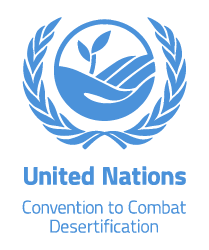Location
The United Nations Convention to Combat Desertification in Those Countries Experiencing Serious Drought and/or Desertification, Particularly in Africa (UNCCD) is a Convention to combat desertification and mitigate the effects of drought through national action programs that incorporate long-term strategies supported by international cooperation and partnership arrangements.
Members:
Resources
Displaying 96 - 100 of 585Dryland restoration successes in the Sahel and Greater Horn of Africa show how to increase scale and impact. Restoring African Drylands
Drylands occupy more than 40% of the world’s land area and are home to some two billion people. This includes a disproportionate number of the world’s poorest people, who live in degraded and severely degraded landscapes. The United Nations Convention to Combat Desertification states on its website that 12 million hectares are lost annually to desertification and drought, and that more than 1.5 billion people are directly dependent on land that is being degraded, leading to US$42 billion in lost earnings each year.
Caring for soil is caring for life. Ensure 75% of soils are healthy by 2030 for healthy food, people, nature and climate : interim report of the mission board for soil health and food
Life on Earth depends on healthy soils. The soil under our feet is a living system – home to many fascinating plants and animals, whose invisible interactions ensure our well-being and that of the planet. Soils provide us with nutritious food and other products as well as with clean water and flourishing habitats for biodiversity. At the same time, soils can help slow the onset of climate change and make us more resilient to extreme climate events such as droughts and floods. Soils preserve our cultural heritage and are a key part of the landscapes that we all cherish.
Small Grants Programme: 25 years of engagement with Indigenous Peoples
A key purpose of this publication is to provide an account of SGP’s experience working with Indigenous Peoples over the last twenty-five years. The publication celebrates past achievements and advances critical lessons that can be used in forging new partnerships with Indigenous Peoples in future programming cycles, including opportunities to employ blended finance solutions.
Guidelines for Land Degradation Neutrality. A report prepared for the Scientific and Technical Advisory Panel of the Global Environment Facility
These guidelines support GEF project developers in formulating projects that contribute to the LDN ambitions of countries and in ensuring that other projects not directly targeting LDN are compatible with LDN objectives and approaches. The guidelines complement and expand the Checklist for Land Degradation Neutrality Transformative Projects and Programmes.They are intended to be applied during project development and at the problem definition and intervention design stages; they are also relevant to monitoring the achievement of LDN goals.
Peatland mapping and monitoring: Recommendations and technical overview
Peatlands cover only 3 percent of the world's surface yet contain as much carbon as all of its vegetation, dramatically underscoring their pivotal role in global climate regulation. Their degradation, by drainage or fire or other forces, triggers their conversion from slow carbon sinks into fast sources capable of releasing carbon stored over millennia in a few decades. To avoid their degradation and effectively plan their restoration, peatlands should be urgently mapped and monitored.


